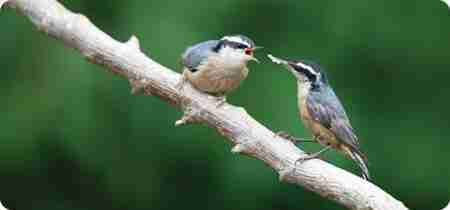[et_pb_section fb_built=”1″ _builder_version=”4.16″ global_colors_info=”{}”][et_pb_row _builder_version=”4.16″ background_size=”initial” background_position=”top_left” background_repeat=”repeat” global_colors_info=”{}”][et_pb_column type=”4_4″ _builder_version=”4.16″ custom_padding=”|||” global_colors_info=”{}” custom_padding__hover=”|||”][pac_divi_table_of_contents included_headings=”off|on|on|off|off|off” level_markers_1=”whole” _builder_version=”4.22.2″ _module_preset=”default” global_colors_info=”{}”][/pac_divi_table_of_contents][et_pb_text _builder_version=”4.16″ background_size=”initial” background_position=”top_left” background_repeat=”repeat” global_colors_info=”{}”]Imagine this: Birds fluttering home from their South American migration, unknowingly carrying an unwelcome stowaway — the highly pathogenic avian influenza (HPAI). This scenario has unfortunately become a chilling reality as the first-ever cases of HPAI have been confirmed on Bird Island, South Georgia in the Antarctic region. Test confirmations rolled out from the UK’s Animal and Plant Health Agency laboratories. The British Antarctic Survey and the Government of South Georgia & the South Sandwich Islands swiftly escalated their biosecurity maneuvers. Field work requiring animal handling is paused and bird species including albatrosses, petrels, and penguins are under intense surveillance. The World Health Organization is on high alert as the increasing mammal cases might facilitate the virus’ leap into humans. With the 2022 HPAI outbreak decimating seabird populations across the Northern Hemisphere and South America, the present HPAI sightings in South America suggested a terrifying possibility of the flu spreading to South Georgia during the 2023–24 bird migration. The impact could be devastating for the teeming seabird colonies in the Territories, but rest assured, strategies to address the HPAI risk and response measures were in place ahead of this unforeseen development. To put it simply, the bird flu has, for the first time, entered the pristine confines of Antarctica.

This image is property of scx1.b-cdn.net.
Discovery of Avian Influenza in Antarctica
Identification of the first cases
A chapter in the history of Antarctica’s unique ecosystem has taken a concerning turn. High pathogenic avian influenza (HPAI), commonly known as bird flu, has made its first confirmed appearance in this remote region. The cases were discovered on Bird Island, South Georgia – a pristine natural sanctuary with an abundant bird population.
Location of the confirmed cases
The location of these confirmed cases was indeed South Georgia’s Bird Island. An extraordinary place home to an array of different birds. This vastly populated island is sadly where these cases were confirmed.
The role of UK’s Animal and Plant Health Agency laboratories
The notable role of the UK’s Animal and Plant Health Agency was in this discovery. These laboratories carried out the initial tests to validate the detected cases, confirming the sad reality – Avian Influenza had indeed reached Antarctica.
Possible Transmission Routes
Role of bird migration from South America
You might be wondering how HPAI could find its way from populated continents to the untouched wilderness of Antarctica. This development was suspected to be due to birds returning from migration in South America. In short, an innocent return after their annual journey could have brought disaster to their home.
High prevalence of HPAI in South America
South America, unfortunately, is home to a high number of HPAI cases. The viral disease primarily affecting birds finds an active breeding ground in this part of the world, making transmission to Antarctica through migratory birds highly plausible.
Response from the British Antarctic Survey and South Georgian Government
Increase in biosecurity measures
In light of these developments, the British Antarctic Survey and South Georgian Government didn’t sit idle. They’re now hard at work to increase biosecurity measures significantly on Bird Island to protect this unique ecosystem.
Monitoring of the situation
The situation, understandably worrying, is being closely monitored. Gathering information and ensuring transparency is a crucial process in this daunting scenario.
Discontinuation of animal-related field work
In an immediate response, most field work that involved animal handling has been stopped. An effort taken to ensure the safety of both the precious wildlife and research personnel.
Monitoring of Island Bird Population
Species inhabiting Bird Island
Bird Island is home to several species of albatrosses, petrels, and penguins. These species thrive in large numbers and contribute to the island’s rich biodiversity.
Current status of the bird population
Bird populations are being closely scrutinised and monitored. While this persistent monitoring can be stressful, it’s absolutely necessary to curb the spread and effects of HPAI.
Effects of Bird Flu on different species
Bird Flu can have various effects on different species, given their distinct immune responses. The effects are being closely studied to provide the necessary interventions.

World Health Organization’s Alert
The primary effect of HPAI on birds
HPAI has a primary effect on birds by causing severe illness that often leads to death. But this raises another more concerning thought – What’s next?
Rise in mammal cases
The World Health Organization has indeed expressed concern that an increase in mammal cases may give the virus an opportunity to adapt and mutate, leading to the potential for human infection.
The potential for human infection
While primarily affecting birds, the virus’s increased prevalence in mammals raises a serious question about its potential transmission to humans.
Understanding Avian Influenza
A brief overview of Avian Influenza
Avian Influenza, or bird flu, is a viral illness that primarily affects bird populations. Some strains are more severe than others, and two of these strains have raised heightened concerns.
Deadliness of H5 and H7 strains in domestic poultry
The H5 and H7 strains of Avian Influenza are especially contagious and deadly in domestic poultry. The presence of these strains in wild bird populations raises grave concerns and the call for urgent control measures.

Outbreak Timeline
Outbreak commencement in 2022
The ongoing outbreak was first identified in 2022. Sadly, it has led to high mortality rates in seabirds across different regions of the world.
Mortality rates in seabirds across different regions
Regions affected notably include the Northern Hemisphere, areas south of Africa, and regions around both the Atlantic and Pacific Oceans. Even more concerning, the disease plagues continental South America.
Potential Spread to South Georgia
Confirmation of HPAI in South America
The presence of HPAI has been confirmed in South America, placing other regions at risk during future bird migration seasons.
Potential transmission to South Georgia in 2023–2024 migration season
This brings the frightful possibility that HPAI could spread to South Georgia during the upcoming 2023–2024 bird migration season.
South Georgia Government’s Preparedness
Updates on HPAI risk and response measures
To face the possible challenges ahead, the Government of South Georgia & the South Sandwich Islands has updated its HPAI risk and response measures.
Efforts to mitigate the potential spread
Efforts are in motion to mitigate potential spread, trying desperately to contain this disease before it impacts the broader ecosystem.
Potential Impact on Seabird Colonies
Potential effect of HPAI on seabird colonies
The confirmed presence of HPAI could have a large impact across plentiful seabird colonies in these Territories. The loss it can cause to their numbers and biodiversity can be substantial, and in some cases, irreversible.
Significance of the seabird colonies to the local ecosystem
The colonies of seabirds significantly contribute to these Territories’ local ecosystems. A potential outbreak could be incredibly destructive to the biodiversity and ecological balance in these areas. Herein lies the gravity of what we face – a battle not only for the birds but for the world as we know it.

[/et_pb_text][/et_pb_column][/et_pb_row][/et_pb_section]



